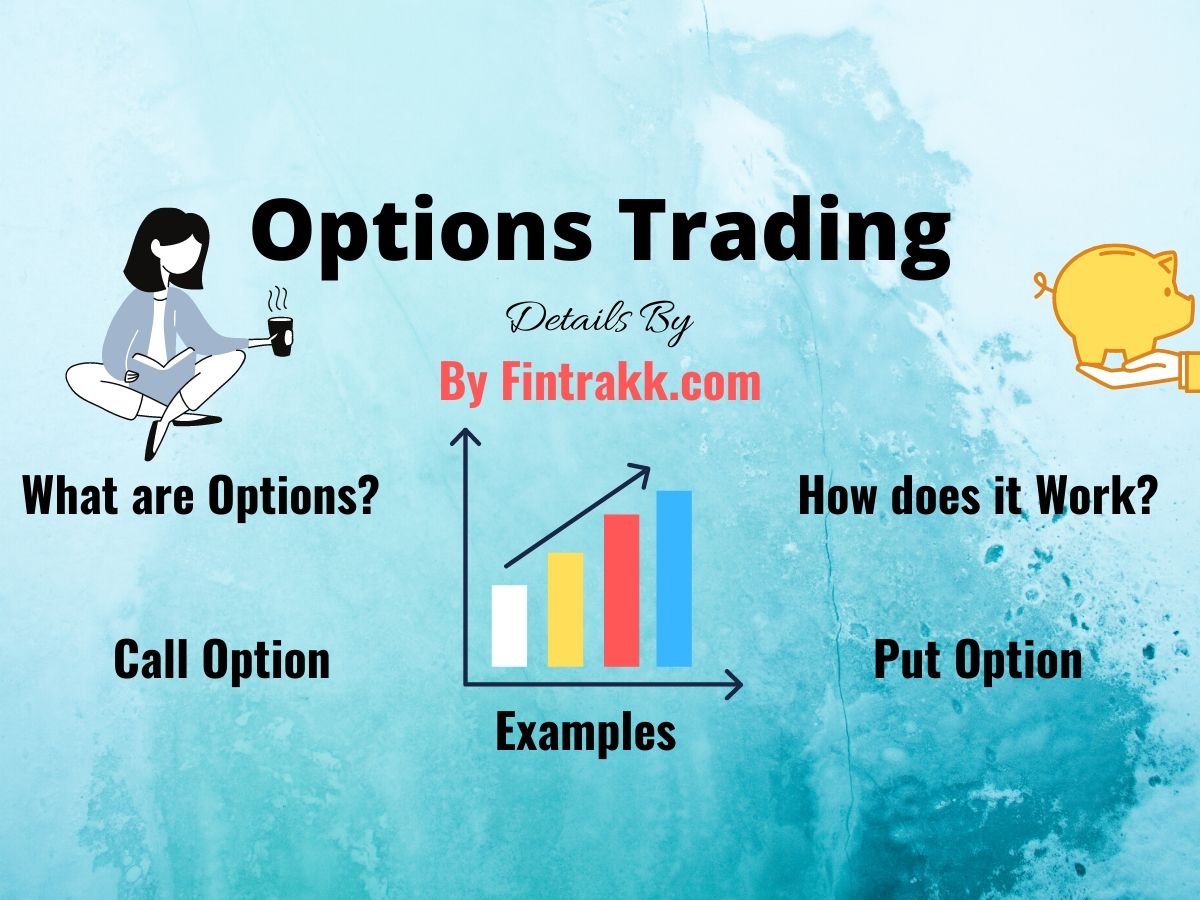Have you ever wished you could harness the power of volatility in the market? Maybe you’ve heard whispers of “options” and wondered if they hold the key to unlocking substantial profits. While options trading can be a powerful tool, navigating its complexities can feel like traversing a labyrinth without a map. But fear not, dear reader, for we’re about to embark on a journey to unveil the secrets of option trading levels and strategies, specifically tailored for beginners like yourself.

Image: fintrakk.com
Option trading, in its essence, is a contract that grants the buyer the right, but not the obligation, to buy or sell an underlying asset at a predetermined price on or before a specific date. These contracts, known as options, come in two flavors: calls and puts. Call options give the right to buy, while put options grant the right to sell. Understanding these core concepts is crucial, as they form the foundation upon which we’ll build our knowledge of option trading levels.
Understanding Option Trading Levels – Your Compass in the Market
Imagine navigating a vast, uncharted sea. You need a compass to guide your path, and in the world of option trading, these “levels” serve as your compass. They provide a framework to understand the intrinsic value and potential risks associated with options contracts.
Let’s dissect the crucial levels:
1. Strike Price: Where the Magic Happens
Definition:
The strike price is the predetermined price at which the option holder can buy or sell the underlying asset. Think of it as the “magic number” that dictates the contract’s value.

Image: www.angelone.in
Example:
You buy a call option on Apple stock with a strike price of $150. This means you have the right to buy 100 shares of Apple at $150 per share, regardless of its actual market price on the expiration date.
Key Takeaways:
A strike price that is lower than the current market price makes a call option more valuable (in-the-money). Conversely, a strike price above the current price makes it less valuable (out-of-the-money). The same logic applies to put options, but with an inverse relationship.
2. Expiration Date: A Time-Sensitive Game
Definition:
The expiration date is the final date on which you can exercise your option. After this date, the option loses its value and becomes worthless.
Example:
If your Apple call option expires in three months, you have until that date to decide whether to exercise your right to buy the shares at $150. If you don’t exercise it by then, the option expires, and you lose the premium you paid.
Key Takeaways:
The closer the expiration date, the more volatile the option’s price becomes, as time decay (theta) plays a significant role. Options with shorter timeframes are generally riskier but can offer higher potential rewards.
3. Option Premium: The Cost of the Contract
Definition:
The option premium is the price you pay to buy an option contract. It reflects the market’s perception of the option’s potential value based on factors like volatility, time to expiration, and the strike price.
Example:
You might pay $5 per share for a call option on Apple. This means you’re paying $500 for the contract (100 shares x $5). The premium is essentially a gamble on the underlying asset’s future price movement.
Key Takeaways:
A higher premium indicates greater risk and a higher potential reward. Conversely, a lower premium points to lower risk but also lower potential gains. Remember, the premium is what you lose if you choose not to exercise the option.
Navigating Options Strategy Levels: Building Blocks for Success
With a solid understanding of the fundamental levels, we can move to the strategic level. Think of these as blueprints for how you’ll position yourself within the market, leveraging the power of options.
1. Covered Call Writing: Earning Premium While Holding Stock
Definition:
This strategy involves selling a call option on a stock you already own. By selling the option, you receive a premium, but if the stock price rises above the strike price, you’re obligated to sell your shares at the strike price.
Example:
You own 100 shares of Apple, and you sell a call option with a strike price of $160 for a premium of $5 per share. If the price of Apple stays below $160, you keep the premium and your shares. But if the price rises above $160, you’re obligated to sell your shares at $160 and forgo the potential for further gains.
Key Takeaways:
This strategy is suitable for investors who believe the stock price will remain flat or move slightly upwards. It’s a conservative approach that can generate income from options premiums while mitigating potential losses.
2. Covered Put Writing: Profiting From a Decline, With a Safety Net
Definition:
In this strategy, you sell a put option on a stock you already own. The premium you receive is a potential profit if the stock price remains above the strike price. However, if the stock price falls below the strike price, you’re obligated to buy more shares at that lower price.
Example:
You own 100 shares of Tesla and sell a put option with a strike price of $700 for a premium of $10 per share. If the price stays above $700, you keep the premium. But if it falls below $700, you must buy 100 additional shares at the price of $700, effectively lowering your average cost per share.
Key Takeaways:
Covered put writing is a bearish strategy, suitable for those who believe the stock price will either stagnate or decline. It’s used for generating premium income, increasing your position in the stock, and limiting risk if the price does fall.
3. Protective Put: Insuring Your Portfolio Against Downside Risk
Definition:
This strategy involves buying a put option on a stock you own. It provides insurance against potential losses if the stock price declines below the strike price.
Example:
You own 100 shares of Amazon and buy a put option with a strike price of $2,500, paying a premium of $10 per share for the protection. If the price of Amazon drops, you can exercise your put option to sell your shares at $2,500, limiting your losses.
Key Takeaways:
The protective put strategy is ideal for investors who want to protect their portfolio during periods of high market volatility, especially for long-term investments. It acts as a safety net against sudden market downturns.
4. Straddle: Riding the Volatility Wave
Definition:
This strategy involves buying both a call option and a put option on the same underlying asset, with the same strike price and expiration date. It’s a neutral strategy expecting significant market movement in either direction.
Example:
You buy a call option and a put option on Microsoft stock, both with a strike price of $250 and an expiration date in three months. If the price of Microsoft experiences a significant jump or drop, you’ll profit, but you’ll lose money if the price stays relatively stable.
Key Takeaways:
A straddle is best suited for investors who expect large price fluctuations, with the potential for high rewards but also a significant risk of losing the premium paid for the options.
5. Straddle: Riding the Volatility Wave
Definition:
This strategy involves simultaneous buying of both a call and put option on the same underlying asset, with the same strike price and expiration date. It’s a neutral strategy expecting significant market movement in any direction.
Example:
You buy a call option and a put option on Microsoft stock, both with a strike price of $250 and an expiration date in three months. If the price of Microsoft experiences a significant jump or drop, you’ll profit. However, you’ll lose money if the price remains relatively stable.
Key Takeaways:
A straddle is best suited for investors who expect large price fluctuations, with the potential for high rewards but also a significant risk of losing the premium paid for the options.
Navigating the Landscape: Essential Considerations for Beginners
While the world of options trading might seem daunting at first, it’s crucial to approach it with a clear head and a sound strategy. Begin with small positions to minimize risk, and don’t invest more than you can afford to lose. It’s also vital to understand the inherent risks of options trading, including:
- Time Decay (Theta): The value of options contracts decays over time. As the expiration date approaches, the potential profit diminishes, and the risk increases, especially for out-of-the-money options.
- Implied Volatility: The market’s perception of the potential price movement of an asset. Higher implied volatility leads to higher option premiums, which can amplify both profits and losses.
- Unlimited Risk: While the potential losses on options are limited, the gains can be unlimited. This high risk is a key reason to start small and gradually build experience.
Learning the Ropes: Resources for Your Option Trading Journey
The journey of mastering option trading is an ongoing process. But you’re not alone. There are numerous resources available to help you refine your skills and broaden your understanding:
- Brokerage Platforms: Most reputable brokerage platforms offer educational resources, tutorials, and even simulated trading accounts to practice your strategy without risking real money.
- Online Courses and Books: There are countless online courses and books dedicated to teaching option trading strategies, risk management, and fundamental concepts.
- Financial News Sources: Stay informed about market trends, economic indicators, and industry news that can influence the prices of underlying assets and impact your option strategies.
Option Trading Level
https://youtube.com/watch?v=P3vgEVpoV6U
Final Thoughts: The Enduring Value of Options
Whether you’re a seasoned investor or starting your trading journey, options provide a powerful tool to enhance your strategy, potentially amplifying returns or limiting risk. But remember, like any financial instrument, knowledge is power. Embrace a learning mindset, understand the fundamentals, and hone your skills by practicing. With patience, discipline, and a clear understanding of options trading levels and strategies, you can navigate the exciting world of options with confidence and potentially unlock the power of volatility to your advantage.
Now, go forth and explore the exciting world of options. Share your experiences, ask questions, and join the lively conversation in the realm of option trading! The journey of learning is a lifelong process, and together, we can learn, grow, and potentially achieve financial success.






